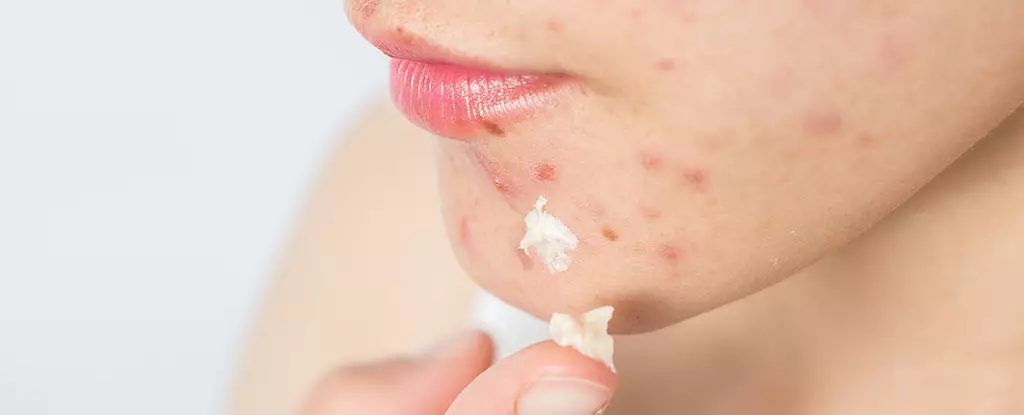

Acne vulgaris, a distressing and common skin condition affecting millions worldwide, may soon find relief through an innovative nanoparticle treatment. Overgrowth of the skin bacterium Cutibacterium acnes causes uncomfortable pustule eruptions. While existing treatments like antibiotics and hormonal therapies have drawbacks and limited efficacy as the bacteria adapts, a breakthrough study conducted by researchers from the University of South Australia, the University of Adelaide, and Aix-Marseille Université in France offers a promising solution. By utilizing the antibiotic narasin delivered in microscopic envelopes, known as nano-micelles, the team achieved deeper skin penetration and improved treatment effectiveness.
In laboratory conditions, the researchers demonstrated the effectiveness of narasin against C. acnes. However, its therapeutic potential soared when combined with nano-micelles. These tiny capsules, about a thousand times smaller than a human hair, vastly improved narasin’s solubility and enabled deeper skin penetration, reaching the hair follicles where C. acnes thrives. The use of Soluplus, a compound enhancing solubility and drug delivery stability, contributed significantly to the success of the nanoparticle delivery system.
According to pharmaceutical scientist Sanjay Garg from the University of South Australia, the micelle formulation effectively delivered narasin to acne target sites. Conversely, the compound solution failed to permeate the skin layers adequately. While the researchers conducted experiments using pig ear skin, the ultimate goal is to administer the treatment directly to the hair follicles below the skin, where C. acnes resides.
While the study’s focus thus far has been overcoming the physical barriers of skin, the researchers are enthusiastic about the potential of their nanoparticle gel on actual individuals. Early indications show the narasin nanoparticle gel’s ability to penetrate deeply into the skin, reaching the targeted C. acnes and effectively combating the bacteria. Additionally, the gel demonstrated remarkable stability for four weeks at room temperature, a crucial factor in its future applicability.
Researchers believe that a better understanding of acne and its causes will lead to more effective treatments, particularly as existing options become less efficient due to the rise of antibiotic resistance. Acne has a significant impact on approximately 9.4% of the global population, predominantly adolescents, causing distress, embarrassment, anxiety, low self-confidence, and social isolation among sufferers. Pharmaceutical scientist Fatima Abid from the University of South Australia emphasizes the need for improved therapies to alleviate the physical and psychological burden faced by acne patients.
The development of a narasin nanoparticle gel represents a promising advancement in the treatment of acne vulgaris. The delivery system’s ability to enhance solubility and increase penetration to target sites demonstrates its potential efficacy against C. acnes. While further research is necessary to evaluate the treatment on real patients, these preliminary findings offer hope for a future where individuals with acne can experience relief from its burdensome effects. By continuing to explore the causes of acne and developing innovative therapies, scientists aim to improve the lives of millions affected by this prevalent skin condition.
A groundbreaking expedition led by an international research team, featuring esteemed scientists from the University…
The pursuit of coherent control over wave transport and localization stands as a monumental challenge…
In recent astronomical explorations, researchers have unearthed a striking phenomenon emanating from a distant corner…
The quest for sustainable practices within the chemical industry is more critical than ever. Researchers…
In the complex interplay of human health, the relationship between the gut and the brain…
The relentless drive for sustainable energy solutions has fueled remarkable advancements in solar technology, with…
This website uses cookies.